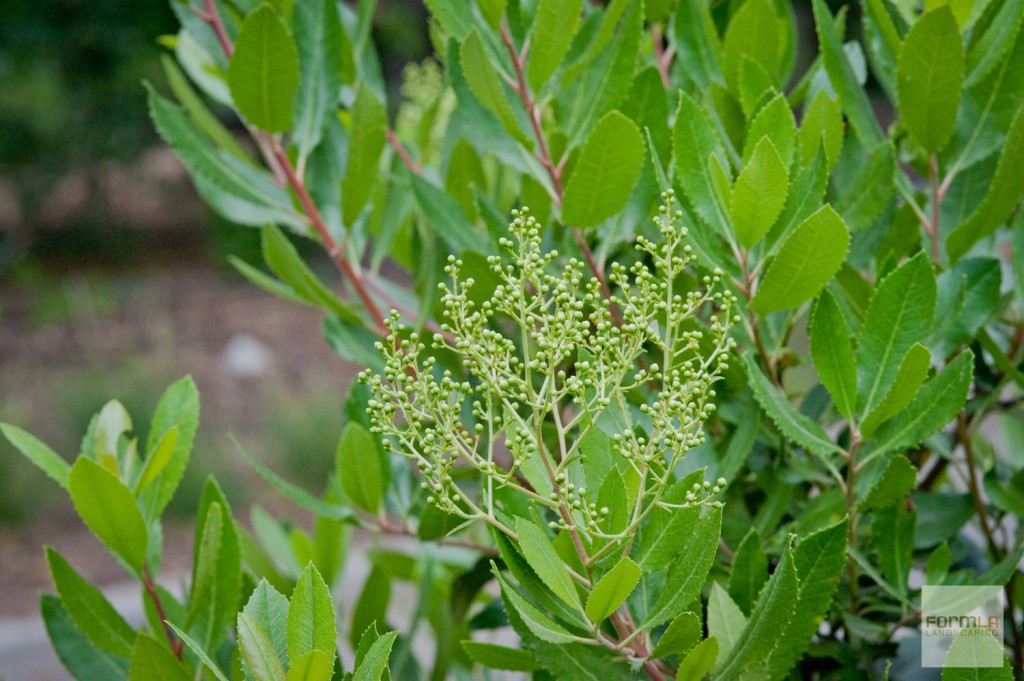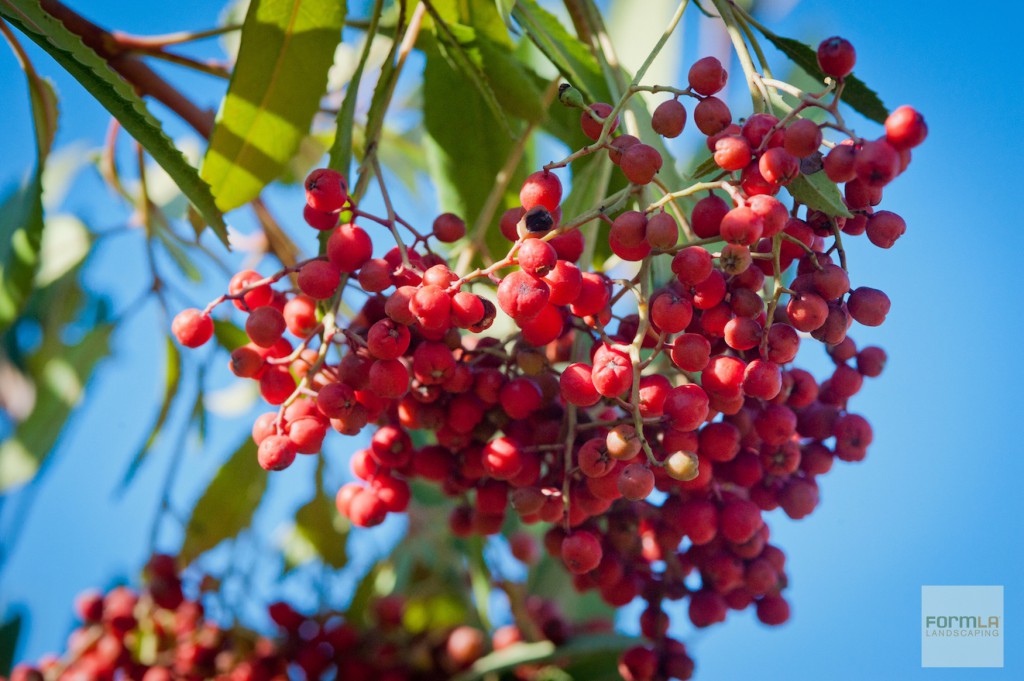HOLIDAY COLOR: TOYON VS. COTONEASTER
By Cassy Aoyagi: Merry red berries and shiny, bright green leaves make both Heteromeles arbutfolia (Toyon) and Cotoneaster lacteus holiday favorites. Both plants range from 1/2″ leaves with low horizontal growth to very broad 3″ leaves growing to 30′ high and wide. Both are used as hedges, and their creamy flowers and red berries add visual interest and attract wildlife. That is where the similarity stops.
Cotoneaster Lacteus
The dozens of species of Cotoneaster make it difficult to decipher which are going to thrive in our Southern California arid climate. Cottoneaster’s challenges include:
- Thirst. Many species of Cotoneaster are native to mountainous areas like the Himalayas, making it thirstier in lower altitudes where precipitation could be less than half of what is available at higher elevations.
- Disease. Along with variable watering needs, the Cotoneaster is susceptible to fireblight, a bacterial plant disease, which can make it somewhat of a nuisance if planted near an indigenous plant community of Southern California.
- Seasonality. Some varieties are evergreen where others are deciduous, loosing their leaves during the cold season. These varieties are obviously much less useful as privacy hedges and wind screens.
- Pollinator Appeal. Cottoneaster’s berries and flowers will attract pollinators, but many of those native to Southern California would be more interested in nesting and living in a Toyon.
Heteromeles Arbutifolia, aka Toyon
In contrast, the equally lovely Toyon has a broad range throughout California from Coastal sage, Chaparral and Oak Woodland plant communities, making it incredibly diverse in nature and adaptable in our own gardens. Unlike the Cotoneaster, it has one species, arbutifolia. Toyon, or Christmas Berry:
- Creates an incredibly handsome habit varying in height from 10′ to 25′,
- Performs as a natural hedge or screen year round,
- Will fill with birds as it fills with berries – which you can eat too,
- Thrives as a multi-trunked specimen or small patio tree, and
- Creates a lush green background, counter intuitive to our expectations about the appearance of low water plants.
Those who attended our Wild Eats Hike and Learn will also recognize Christmas Berry as exceedingly useful resource… its berries can be made into jams, beverages, dye, custards and curatives for stomach ailments.
For more guidance on where to plant big dry ones, see our past Wet-to-Dry Exchange articles.


